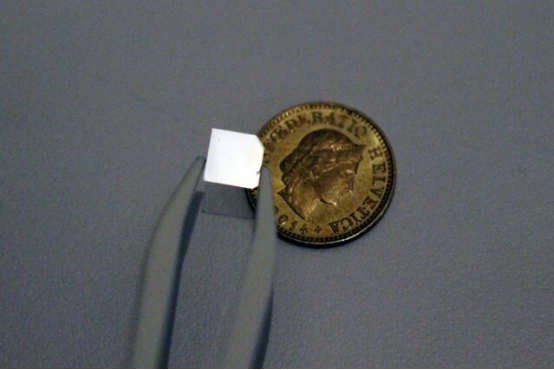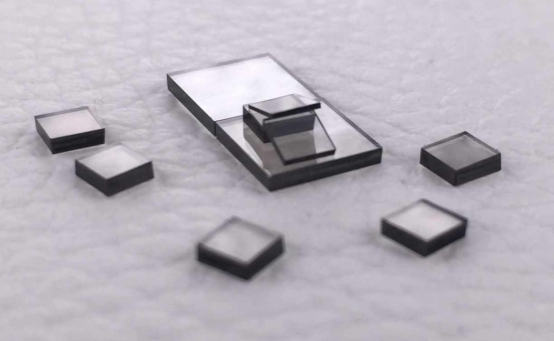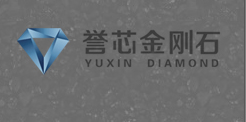Company tel:+86-379-63184520
Contact number:+86-15937921751
Postcode:471000
Email:info@yuxindiamond.com
Address:3-1-508 Luoyang National University Science Park, No. 2 Penglai Road, Jianxi District, Luoyang, China 471000
Scientists Observe A Single Quantum Vibration Under Ordinary Conditions
When a guitar string is plucked,it vibrates as any vibrating object would,rising and falling like a wave,as the laws of classical physics predict.But under the laws of quantum mechanics,which describe the way physics works at the atomic scale,vibrations should behave not only as waves,but also as particles.The same guitar string,when observed at a quantum level,should vibrate as individual units of energy known as phonons.
Now scientists at MIT and the Swiss Federal Institute of Technology have for the first time created and observed a single phonon in a common material at room temperature.

Until now,single phonons have only been observed at ultracold temperatures and in precisely engineered,microscopic materials that researchers must probe in a vacuum.In contrast,the team has created and observed single phonons in a piece of diamond sitting in open air at room temperature.The results,the researchers write in a paper published today in Physical Review X,"bring quantum behavior closer to our daily life."
The technique the team developed can now be used to probe other common materials for quantum vibrations.This may help researchers characterize the atomic processes in solar cells,as well as identify why certain materials are superconducting at high temperatures.From an engineering perspective,the team's technique can be used to identify common phonon-carrying materials that may make ideal interconnects,or transmission lines,between the quantum computers of the future.
"Democratizing quantum mechanics"
Phonons,the individual particles of vibration described by quantum mechanics,are also associated with heat.For instance,when a crystal,made from orderly lattices of interconnected atoms,is heated at one end,quantum mechanics predicts that heat travels through the crystal in the form of phonons,or individual vibrations of the bonds between molecules.
Single phonons have been extremely difficult to detect,mainly because of their sensitivity to heat.Phonons are susceptible to any thermal energy that is greater than their own.If phonons are inherently low in energy,then exposure to higher thermal energies could trigger a material's phonons to excite en masse,making detection of a single photon a needle-in-a-haystack endeavor.
The first efforts to observe single phonons did so with materials specially engineered to harbor very few phonons,at relatively high energies.These researchers then submerged the materials in near-absolute-zero refrigerators Sudhir describes as"brutally,aggressively cold,"to ensure that the surrounding thermal energy was lower than the energy of the phonons in the material.
"If that's the case,then the[phonon]vibration cannot borrow energy from the thermal environment to excite more than one phonon,"Sudhir explains.
The researchers then shot a pulse of photons(particles of light)into the material,hoping that one photon would interact with a single phonon.When that happens,the photon,in a process known as Raman scattering,should reflect back out at a different energy imparted to it by the interacting phonon.In this way,researchers were able to detect single phonons,though at ultracold temperatures,and in carefully engineered materials.
"What we've done here is to ask the question,how do you get rid of this complicated environment you've created around this object,and bring this quantum effect to our setting,to see it in more common materials,"Sudhir says."It's like democratizing quantum mechanics in some sense."
One in a million
For the new study,the team looked to diamond as a test subject.In diamond,phonons naturally operate at high frequencies,of tens of terahertz—so high that,at room temperature,the energy of a single phonon is higher than the surrounding thermal energy.
"When this crystal of diamond sits at room temperature,phonon motion does not even exist,because there's no energy at room temperature to excite anything,"Sudhir says.
Luoyang Yuxin Diamond Co.,Ltd’s CVD single crystal diamond is manufactured by Microwave Plasma Chemical Vapor Deposition.With good wear resistance,thermal conductivity and compressive resistance,high hardness and strength,low friction coefficient,excellent corrosion resistance and chemical stability,it can be sharpened into very sharp blade,and it is considered to be the most ideal ultra-precision cutting tool material,which occupies an important position and is widely used in the mechanical processing field especially the ultra precision processing field.
Features:used in ultra precision cutting tools,especially processing non-ferrous metal materials,such as aluminum(alloy),copper,high polymer materials(MMCs),carbon fiber reinforced plastics(CFPs)Parts surface can be the mirror effect,and its surface roughness can reach below Ra-0.1μm.








